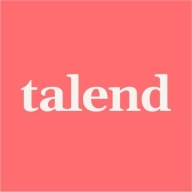

Talend Data Integration and MuleSoft Composer are both in the competitive data integration platform category. Talend Data Integration appears to have the upper hand in terms of competitive pricing and support, whereas MuleSoft Composer stands out with its extensive features, attracting users seeking comprehensive capabilities.
Features: Talend Data Integration offers extensive ETL capabilities, open-source flexibility, and strong data transformation features. MuleSoft Composer is known for its seamless connectivity across applications, cloud-native architecture, and intuitive automation tools.
Room for Improvement: Talend Data Integration could enhance its user interface, improve scalability in cloud environments, and offer more real-time analytics capabilities. MuleSoft Composer might focus on optimizing its pricing structure, expanding its documentation resources, and enhancing its support for larger data volumes.
Ease of Deployment and Customer Service: Talend Data Integration ensures a straightforward deployment process, supported by extensive documentation and a helpful community. MuleSoft Composer offers a cloud-first model that enhances scalability, with dedicated customer service to ensure speedy implementation.
Pricing and ROI: Talend Data Integration provides budget-friendly setup costs, promising satisfactory ROI across projects. MuleSoft Composer involves higher initial costs but offers significant ROI through its advanced integration capabilities and automation, justifying the expense for comprehensive integration solutions.
It has helped us save a lot of time by automating repetitive data processes and reducing manual interventions.
They didn't want to use separate ETL tools for MDM or for TMC and data preparation, which is all included in one package.
The support team is responsive when we raise issues, and they usually provide clear guidance or solutions.
We have a partnership with Talend for support, and two people assist us, along with a weekly call to address any issues.
By using features like job parallelization and modular design, we can expand our data flows without having to rebuild everything.
The scalability of Talend Data Integration is good; if it weren't scalable, it wouldn't be reliable.
Once the jobs are properly designed and deployed, they run reliably without major issues.
Talend Data Integration can be improved by reducing the license cost, as it is a bit high compared to other tools, which can be a burden for small-scale companies wanting to buy a license.
Managing and deploying multiple jobs in complex environments could be easier with stronger versioning tools.
Regarding ETL, Talend Data Integration is great, but concerning real-time data processing, people are not really sure about Talend Data Integration or might not know how it provides such types of flexibilities.
My experience with Talend Data Integration's pricing, setup cost, and licensing is that it is a bit higher compared to other tools, making it not very affordable.
By automating daily data loading processes, we reduced manual effort by around three or four hours per day, which saved roughly 60 to 80 hours per month.
The best feature of Talend Data Integration is its multiple data DB components; we have almost all the components and also cloud versions, with TMC allowing us to perform data preparation and data stewardship.
Flexibility is a key feature I appreciate about Talend Data Integration, especially the integration of Java within it and the ease of integrating with multiple source repositories such as GitHub and Bitbucket.
| Product | Market Share (%) |
|---|---|
| MuleSoft Composer | 2.1% |
| Talend Data Integration | 1.4% |
| Other | 96.5% |


| Company Size | Count |
|---|---|
| Small Business | 2 |
| Midsize Enterprise | 2 |
| Large Enterprise | 4 |
Connect apps and data to Salesforce quickly and easily with clicks, not code — all inside of the Salesforce UI.
Enrich your 360-degree customer view by empowering your Salesforce admins with a no-code solution for quickly unlocking data, connecting apps, and automating integrations to boost productivity.
- Build integrations easily with clicks, not code — all inside Salesforce
- Hit the ground running with a growing library of prebuilt connectors
- Preview as you build connections and design with real data
- Monitor any errors with automatic alerts
Talend Data Integration efficiently handles data transformation and integration with ease, supporting complex business needs. It enables seamless data management across all sources.
Talend Data Integration offers a robust platform for managing and transforming data. It connects disparate systems, enabling data flow across various environments. Users benefit from its ability to streamline processes and improve data accuracy. Its user-friendly interface and flexibility make it a preferred choice for data integration experts.
What are the key features of Talend Data Integration?In finance, Talend Data Integration enhances transaction data processing and compliance reporting. In healthcare, it ensures accurate patient data management, while in retail, it optimizes inventory and customer data analysis. Its adaptability makes it valuable across multiple sectors, addressing specific industry requirements.
We monitor all Integration Platform as a Service (iPaaS) reviews to prevent fraudulent reviews and keep review quality high. We do not post reviews by company employees or direct competitors. We validate each review for authenticity via cross-reference with LinkedIn, and personal follow-up with the reviewer when necessary.